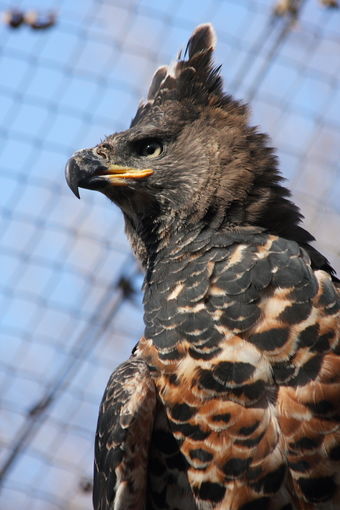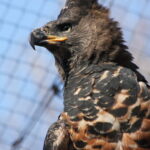Crowned eagles (Stephanoaetus coronatus) are large and powerful birds of prey that are native to sub-Saharan Africa. Contrary to the initial question, these majestic birds do not typically live in desert environments. Instead, they prefer habitats that provide sufficient habitat for their prey and suitably large trees for nesting.
The Habitat Preferences of Crowned Eagles
Crowned eagles are forest and woodland specialists, and they require a combination of indigenous forest, pockets of dense bush, and exotic plantations like eucalyptus and pine to thrive. They are known to return to the same nest year after year and breed annually in some regions, including the Durban area of South Africa.
Characteristics of the Crowned Eagle’s Ideal Habitat
- Forest and Woodland Environments: Crowned eagles are adapted to living in forested and wooded areas, where they can find the necessary resources for their survival.
- Diverse Vegetation: These birds require a mix of indigenous forest, dense bush, and exotic plantations to meet their various needs, such as nesting, hunting, and roosting.
- Availability of Prey: Crowned eagles are known to capture prey that is several times their own weight, so they need habitats that can support a diverse range of small to medium-sized animals.
- Suitable Nesting Sites: Large, sturdy trees are essential for crowned eagles to build their nests and raise their young.
Adaptations to Non-Desert Environments
While crowned eagles have been known to adjust to surviving around built-up environments, they still require the presence of suitable patches of indigenous forest and pockets of dense bush to thrive. Their broad wings and long, broad tails enable them to maneuver accurately in between the trees and understorey vegetation of their preferred habitats.
Factors Limiting Crowned Eagles in Desert Environments
Desert environments typically lack the necessary resources and habitat features that crowned eagles require for their survival and successful breeding. Some key factors that limit their presence in desert areas include:
- Lack of Prey: Deserts generally have a lower diversity and abundance of small to medium-sized animals that make up the primary prey of crowned eagles.
- Scarcity of Nesting Sites: The sparse and often low-growing vegetation in desert environments may not provide the large, sturdy trees needed for crowned eagles to build their nests.
- Limited Water Resources: Crowned eagles require access to reliable sources of water, which can be scarce in desert ecosystems.
- Extreme Temperatures: The hot, dry conditions of desert environments may be challenging for crowned eagles, which are adapted to more temperate and humid forest and woodland habitats.
Conservation Efforts for Crowned Eagles
Due to habitat loss and degradation, as well as other threats such as hunting and electrocution, crowned eagles are classified as “Near Threatened” on the IUCN Red List of Threatened Species. Conservation efforts are crucial to ensure the long-term survival of these impressive birds of prey.
Key Conservation Measures
- Habitat Protection and Restoration: Protecting and restoring the indigenous forests, woodlands, and dense bush habitats that crowned eagles rely on is essential for their conservation.
- Reducing Human-Wildlife Conflict: Addressing issues like livestock predation and the illegal wildlife trade can help mitigate threats to crowned eagles and their populations.
- Monitoring and Research: Ongoing monitoring and research on crowned eagle populations, their ecology, and the threats they face are crucial for informing effective conservation strategies.
- Community Engagement: Engaging local communities in conservation efforts and raising awareness about the importance of crowned eagles can help garner support for their protection.
Conclusion
In conclusion, crowned eagles are not adapted to live in desert environments. These impressive birds of prey are forest and woodland specialists, requiring a combination of indigenous forest, dense bush, and exotic plantations to thrive. While they have shown some adaptability to built-up areas, the lack of suitable prey, nesting sites, and water resources in desert ecosystems makes these environments unsuitable for crowned eagles. Ongoing conservation efforts are crucial to ensure the long-term survival of this Near Threatened species.


